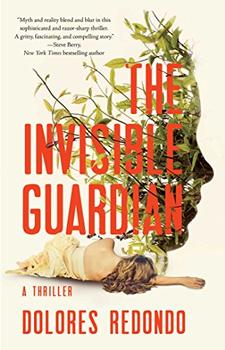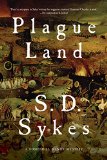Summary | Excerpt | Reading Guide | Reviews | Beyond the book | Read-Alikes | Genres & Themes | Author Bio

Douglas Nicholas's first novel, Something Red, is a horror story set in 13th-century England. The narrative follows a band of four travelers as they attempt to cross the countryside at the same time a vicious "something" is in the area, brutally murdering those with whom the troupe has contact but never attacking the quartet directly. The leader of the company, an enigmatic woman named Molly, knows more about the killings than she readily admits, and determines to use her talents and those of her retinue to stop the slaughter.
The tale is told from the viewpoint of thirteen-year-old Hob, an orphan unofficially adopted by Molly. As the book opens, Hob has been touring with Molly, Molly's lover Jack, and her granddaughter Nemain (pronounced "NEV-an"), for just over a year. Hob is the only individual that readers come to know well; Nicholas does a brilliant job of creating a character who grows and changes over the course of the novel. The author realistically conveys the thoughts and actions of a young teen, and it makes Hob very believable. The other members of the group remain more of a mystery, their pasts still murky at the book's conclusion. Readers come to know them in the same way one might learn about a new person in one's life: bit by bit, one facet at a time, but knowing that it'll take time to really know who they are. So, while readers do learn somewhat about Molly, Jack and Nemain throughout the course of the novel, it's understood that there's much more to be discovered about them.
The book's jacket refers to the story as "a haunting fantasy of love, murder and sorcery," but I find the description misleading. The "love" implied is really the growing awareness of a thirteen-year-old for the opposite sex, and consequently it's more coming-of-age than love story. In addition, while there is a certain amount of gore and combat with the supernatural, these scenes are few and far between and may leave hard-core horror fans disappointed; these elements span so few pages they seem almost secondary to the plot.
Indeed, readers who approach Something Red as historical fiction that just happens to contain an element of the fantastical are likely to be those most satisfied with it. Nicholas takes great pains in describing every aspect of a traveler's life during this time period, including how those on such a journey would obtain food and water, how they'd camp for the night, what clothing they typically wore, and what (non-supernatural) hazards they'd likely face. His illustrations of the inner workings and architecture of the medieval monastery, inn and castle that the heroes visit over the course of their journey are especially vivid, and provide the kind of detailed picture of time and place not usually associated with horror novels. Those who relish books that contain meticulous pictures of everyday life in distant times, though, will find this novel a joy.
Nicholas is an award-winning poet and his writing style reflects this background, which can at different times be an asset or a detriment to one's enjoyment of the novel. On the one hand, his writing is beautifully descriptive throughout: "The sun touched the crenellated rim of the east wall, streaming through the crenels, blocked by the merlons: for a long moment golden rays shot above their heads to throw the silhouette of the ramparts against the western wall, playing on the gatehouse towers." But the rich detail can, on the other hand, slow the narrative and complex sentence structures occasionally make the story difficult to follow. This is particularly true for the first two chapters of the book, and readers who find themselves bogged down early on are advised to keep at it, as it does pick up after the first thirty pages or so.
First-time authors in this genre will sometimes leave room in the plot for sequels, and often a reader can guess from the various loose ends where subsequent books will lead. Nicholas reveals his character's ultimate destinies – what they'll become many years (and presumably many books) later. I would have expected the technique to be too much of a spoiler for my taste, but instead it left me excited to read how the characters will get to those points in their lives.
In short, Something Red is not your run-of-the-mill horror novel, and is more likely to appeal to historical fiction readers than to horror aficionados. Nicholas's beautiful prose, his detailed portrayal of life in medieval England, interesting characters, and underlying supernatural themes make this book a real gem. It's without doubt one of my favorites of the year and I eagerly await the next entry in what I hope is likely to be a series.
![]() This review was originally published in The BookBrowse Review in September 2012, and has been updated for the
July 2013 edition.
Click here to go to this issue.
This review was originally published in The BookBrowse Review in September 2012, and has been updated for the
July 2013 edition.
Click here to go to this issue.

If you liked Something Red, try these:

by Dolores Redondo
Published 2017
Already a #1 international bestseller, this tautly written and gripping psychological thriller forces a police inspector to reluctantly return to her hometown in Basque Country - a place engulfed in mythology and superstition - to solve a series of eerie murders.

by S.D. Sykes
Published 2016
In this chilling historical mystery, young girls go missing from a medieval English village and Lord Oswald de Lacy must find the killer before tragedy strikes again.
Your guide toexceptional books
BookBrowse seeks out and recommends the best in contemporary fiction and nonfiction—books that not only engage and entertain but also deepen our understanding of ourselves and the world around us.